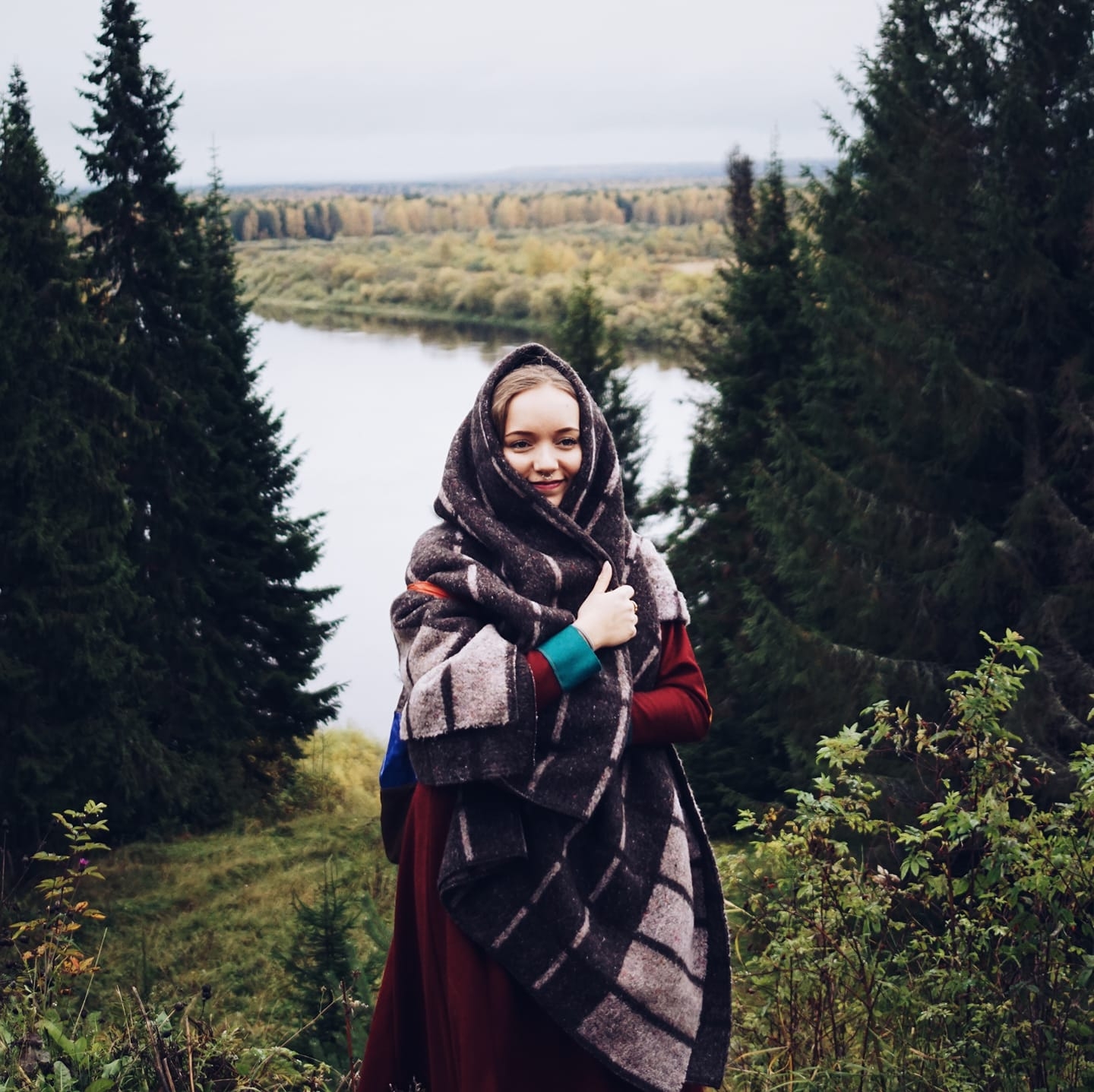Nils Gaup’s 1987 film Pathfinder (Ofelas) is the first full-length feature film made in the Sámi language and an undisputed classic of Sámi cinema. Nominated for the Oscar of the best foreign film, it was a trailblazer because of its production team: the main actors, the director and the screenwriter were all Sámis, and the musical score was composed by Nils-Aslak Valkeapää, the master of traditional Sámi music, joik. Ten years after Pathfinder, Paul-Anders Simma’s feature The Sagojoga Minister also became an instant classic. Yet, despite these cult films, Sámi cinema was lacking a forum of its own. The void was filled by Skábmagovat, Reflections of Endless Night film festival. The story of Skábmagovat is similar to that of duodji, Sámi arts and crafts: Skábmagovat was born out of necessity. “At the time we were short of screening facilities, so we built a snow cinema on the outdoor premises of Siida, the Sámi Museum and Nature Centre,” remembers Sunna Nousuniemi laughing.
Sunna Nousuniemi, who grew up in Inari, has been acting as the director of the Skábmagovat Film Festival since 2018. The Skábmagovat Festival is an indigenous people’s film festival, organized annually in the village of Inari. It is also the very first Sámi film festival in history. The festival draws around 5000 domestic and international film enthusiasts to the small village of Inari during the frigid and lightless months of kaamos, or the polar night.
In the early 1990s, both the desire and the will to create a Sámi film festival were strong. Yet, Sunna adds, “Skábmagovat is not only a film festival; our mission has multiple facets. We offer Sámi language instruction and provide a safe environment where Sámi people can view movies in their own language and reclaim their culture. The films we present bring forth stories that have, for one reason or another, not been told. Through art, we can access painful experiences and help heal the community.”
The films we present bring forth stories that have, for one reason or another, not been told. Through art, we can access painful experiences and help heal the community.
In addition to film screenings, discussions are an important part of the festival’s programming. “It is important to provide an environment where the audience can process the events and themes of the films because some of the films can be quite difficult to watch.” As an example, she mentions Amanda Kernell’s film Sami Blood (2017), which treats the topic of eugenics and racial evaluations that the Sámi were subjected to in the 1930s. It can be empowering to see characters on screen with whom we can identify, but it can also open many old wounds.” In addition to film programming, the festival team does a lot of valuable language-related work, such as translations and sub-titling Sámi films into Finnish. “It is very important that Sámi films have Finnish subtitles because there are many Sámis who have lost their mother tongue.”
Our conversation moves into the institutional structures of cinema, which are in need of diversity of voices. One problem Sunna mentions is securing funding for minority filmmakers. The International Sami Film institute (ISFI), based in Kautokeino, has developed into an indispensable role in this, acting as an important source of funding for Sámi cinema in addition to the state funding channelled through the Finnish Film Foundation and Finnish Broadcasting Company YLE. In addition to her position as the director of the Skábmakovat Festival, Sunna works as a project coordinator at ISFI. “We create programs of Sámi films for festivals and provide background information on Sámi films. We curate about 10-15 film screenings each year.” Thanks to ISFI, there are more and more Sámi films shown at festivals, and film making itself has moved to another level. “Before, it was relatively hard to find Sámi films at international festivals. Now we have to compete over them with other festivals such as the Berlin film festival. This is of course very positive!”
Founded ten years ago, ISFI dates back to a pivotal moment in the history of Sámi cinema, the beginning of the 2010s. In 2013 ISFI launched a project called Seven Sámi Stories, which consists of seven Sámi short films. “Many of the participants were from the younger generation, and the project can be said to have launched the new wave of Sámi cinema. The films included more contemporary narratives – unseen and unheard stories about the past, love, growing up and suicides – on a wide range of topics, but treated with modern narrative techniques. I think it would be terrific if this package was shown in Finnish schools, for example.”
Skábmagovat Festival
– Indigenous Film Festival Skábmagovat is organized for the twenty-second time January 23rd-26th, 2020 in Inari. The film screenings are held at the Sámi Cultural Center Sajos, at Siida, the Sámi Museum and Nature Centre, and Skábmagovat’s own Northern Lights Theatre, built out of snow.
– Skábmagovat is the oldest Sámi film festival in the world and one of the oldest indigenous film festivals. During its 20-year existence, Skábmagovat has showcased films from numerous small and large indigenous nations in more than 90 different languages. In addition to the film programming, the festival offers a wide variety of related events, such as festival clubs and discussions.
– The acting artistic director of the Skábmagovat film festival is Jorma Lehtola, executive producer is Taru Arrela. After this interview, Sunna Nousuniemi has left her position as director of the festival.
– The festival is produced by the Friends of Sámi Arts association in collaboration with Sámi Cultural Center Sajos, the Sámi Museum and Nature Centre Siida, Sámi education institute and Skábma Film Centre.
Skábmagovat Festival is part of the curatorial team for the Finnish Institute’s fall cinema programming.
